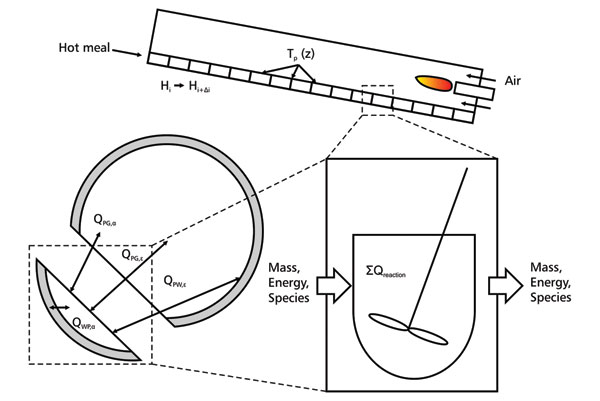How to burn more secondary fuel
The trend towards ever-higher substitution rates of noble primary fuel by waste-derived secondary fuels has been strong for some decades already and still there is no sign for this trend to weaken [1]. However, the spectrum of chemical and physical properties of secondary fuels is vast and also ever changing due to local and periodical variability [2]. Some projects have fallen behind their expectations and the lessons learned are that high substitution rates are not easy to achieve, as discussed by Matthias Mersmann & Matthias Schumacher of aixergee process optimization, Germany.

Figure 1: concept of the comprehensive kiln model including heat transfer and mineralisation in the bed
So what limits the substitution rate for secondary fuels in a cement plant? Obviously, the maximum possible fuel substitution is highly case specific and individual despite all worldwide knowledge transfer and widely standardised equipment in use.
How to find the case-specific optimum
Obviously, a case-specific optimum is defined by the resolution of most of the case-specific restrictions. Consequently, the optimum can only be found if the restrictions have been identified and overcome. However, knowledge assessment of an industrial clinker production process is hampered by many obstacles. The dimensions of the equipment make measurements very difficult and prone for mistakes. Some process parameters simply cannot be measured at all. Integral average values do not fully describe and represent the process characteristics. Here Computational Fluid Dynamics (CFD) can support process optimisation. Modelling and simulation can provide additional information especially in those cases where other ways of information acquisition fail. CFD can comprehensively compute, visualise and explain complex processes [3,4]. In combination with field expertise and solid experience, a detailed process understanding can be obtained which often allows finding optimisation options which do not necessarily require high investment costs.

